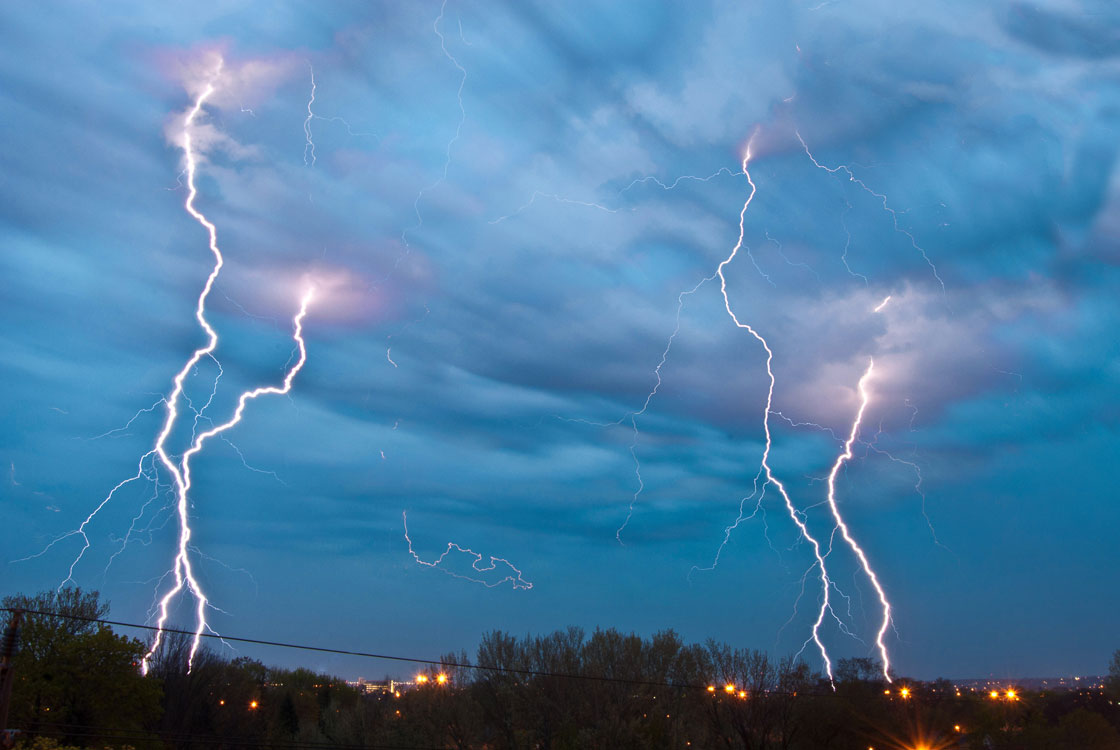WASHINGTON – Lightning strikes in the United States will likely increase by nearly 50 per cent by the end of the century as the world gets warmer and wetter, a new study says.

While those conditions were already known to promote thunderstorms in general, the new work focused on lightning strikes themselves.
Researchers calculated just how much lightning flashes increase as air warms, clouds fill with more energy from water vapour and rainfall intensifies.
READ MORE: Student struck and killed by lightning at Waterloo campus
They concluded that for every degree Fahrenheit the world warms in the future, lightning strikes will go up nearly 7 per cent. That’s 12 per cent for every degree Celsius.
Because scientists forecast that the world may get about 4 degrees Celsius warmer by the end of the century, based on current carbon dioxide emission trends, that comes to a 50 per cent increase in lightning strikes, said David Romps. He’s the atmospheric scientist at the University of California Berkeley who led the study.
“When you used to have two lightning strikes, now you’ll have three,” Romps said. “It’s a substantial increase.”
The researchers based their calculation on 2011 weather data from across the U.S. They presented their results in a paper released Thursday by the journal Science.
Romps said the key is that warmer air holds more water vapour. Water vapour is fuel for thunderstorms, sparking more lightning. The energy that storms get from vapour is the biggest driver in increasing lightning strikes in the future, Romps said.
The new study shows that at any given level of rainfall intensity, there will be more lightning in the future.
READ MORE: How many people die from lightning strikes each year?
Harold Brooks, a National Oceanic and Atmospheric Administration severe storm meteorologist, said the study makes sense and marks an advance over previous work.
The result is important mostly because it means more natural sparks for dangerous wildfires, which are already forecast to worsen with man-made warming, Romps, Brooks and other meteorologists said.
Lightning deaths have been falling from about 100 per year in the 1960s and 1970s to 33 per year in the last decade. So far this year 25 people have been killed, NOAA data shows. Brooks said the drop is because of people changing their behaviour to be safer in storms and better medical treatment of lightning victims.
Michael Mann, a Pennsylvania State University climate scientist, said this study “is yet another reminder that there are likely some unwelcome surprises in store … when it comes to the impacts of climate change.”

Comments